Cosmic inspirations and utopian visions are a remarkable chapter in the history of Czech art and design. They are closely related to the conception of design as fiction and play, which enables free creativity and releases human existence from the limitations of strict utility. Play can be approached both from a child’s perspective and from the world of adult entertainment and strategies. Diverse elements of play abound throughout 20th-century design, especially in the last third of the period, dominated by the demands of awakened emotionality and semantic differentiation, as documented by the ironising and subverted plays of postmodernity.
More text next to the photos
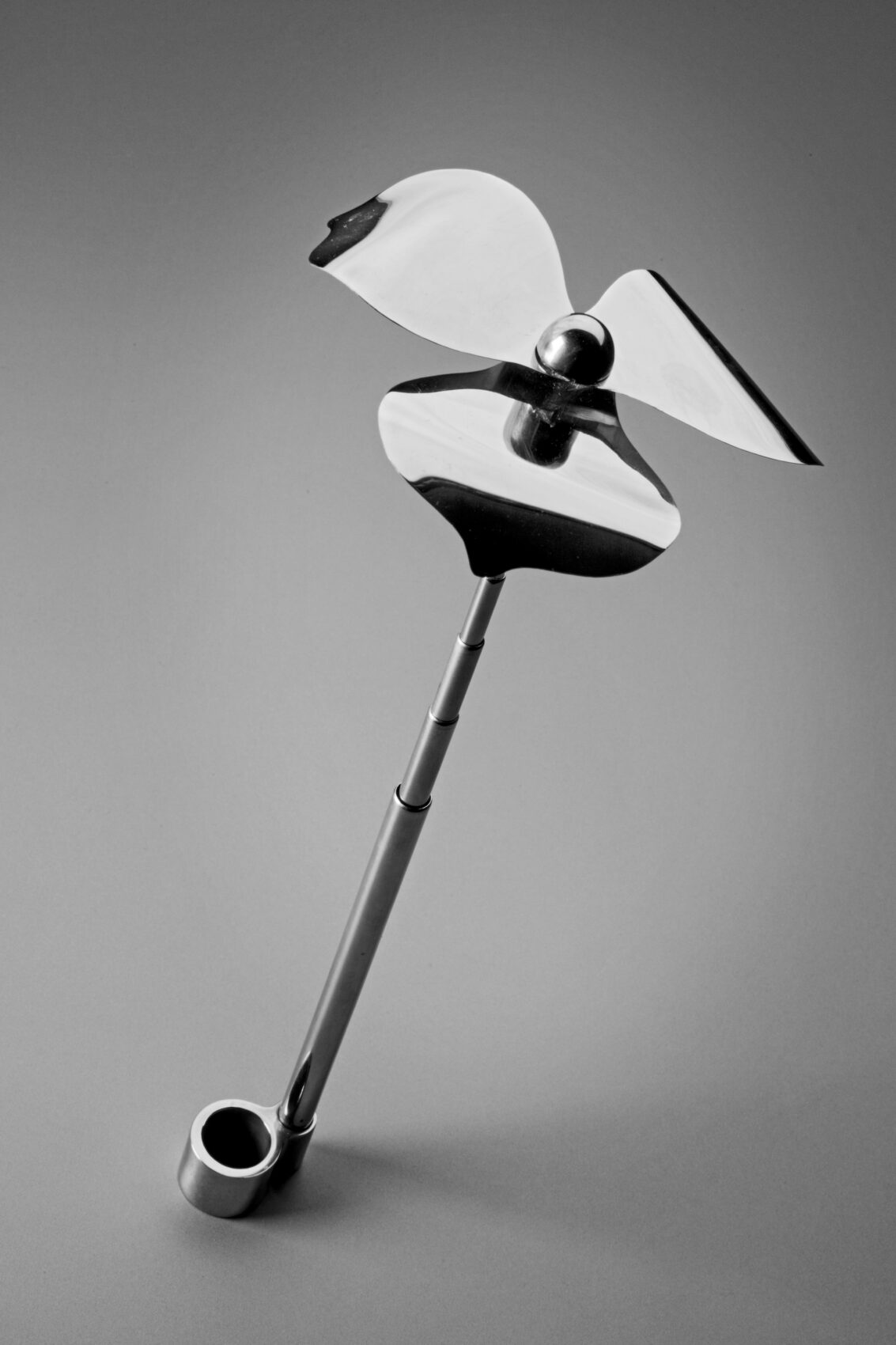
A Radical Jewellery
A radical new approach to jewellery from the 1960s, contradicting the conventional image of decorative adornment, was represented by Václav Cigler. Influenced by cosmic aesthetics, his material of choice was chrome-plated metal combined with optical glass. Cigler’s jewels can be seen as mobile signalling instruments, communicating with proximate and remote surroundings through reflective surfaces of highly polished metal and telescopic aerials, which protrude into space like the antenna of an insect.
Václav Cigler (born 1929). Telescopic ring with aerial, 1967. Chrome-plated brass
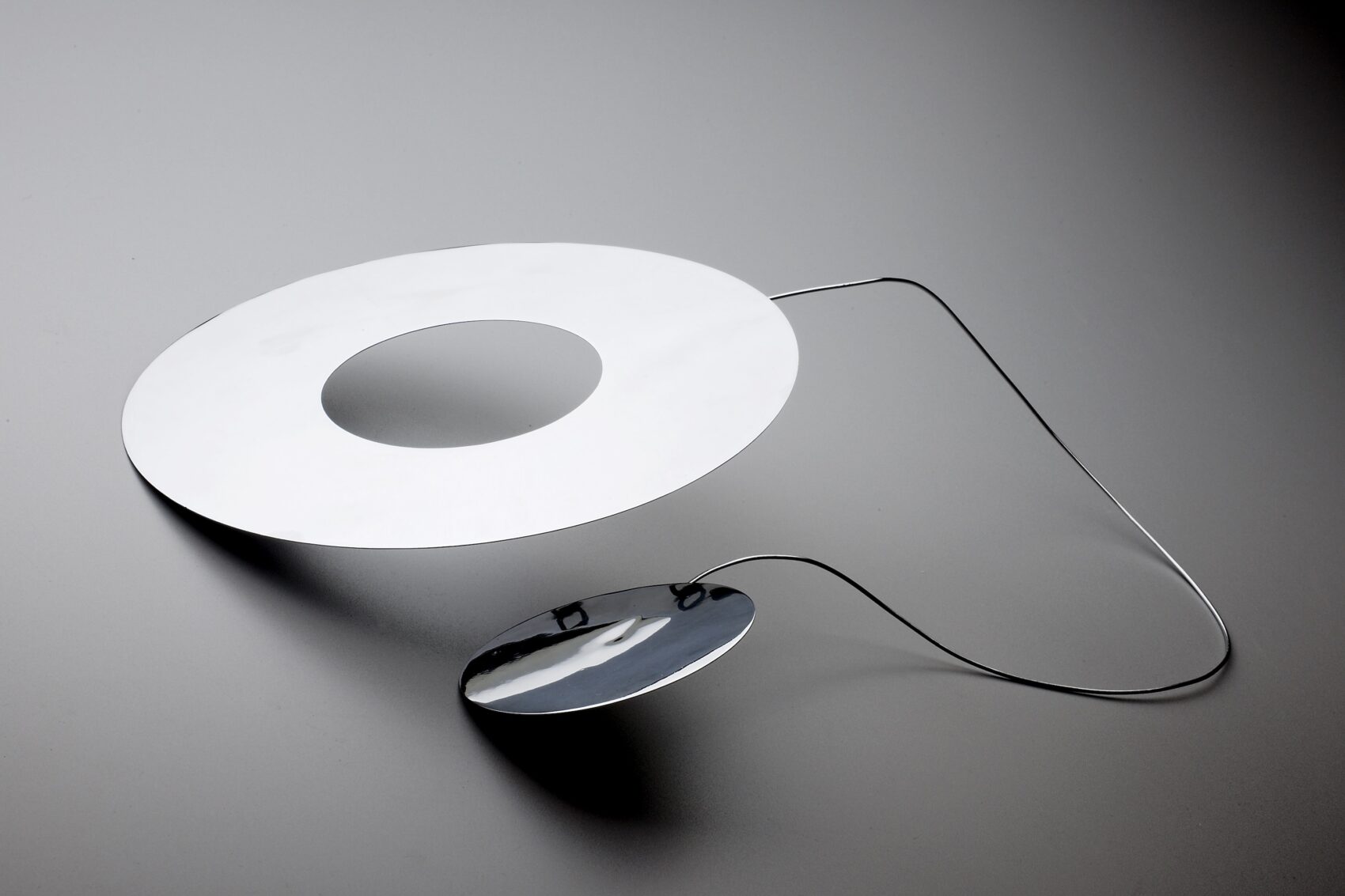
Václav Cigler
Václav Cigler (born 1929). Necklaces, 1965 and 1975. Chrome-plated brass
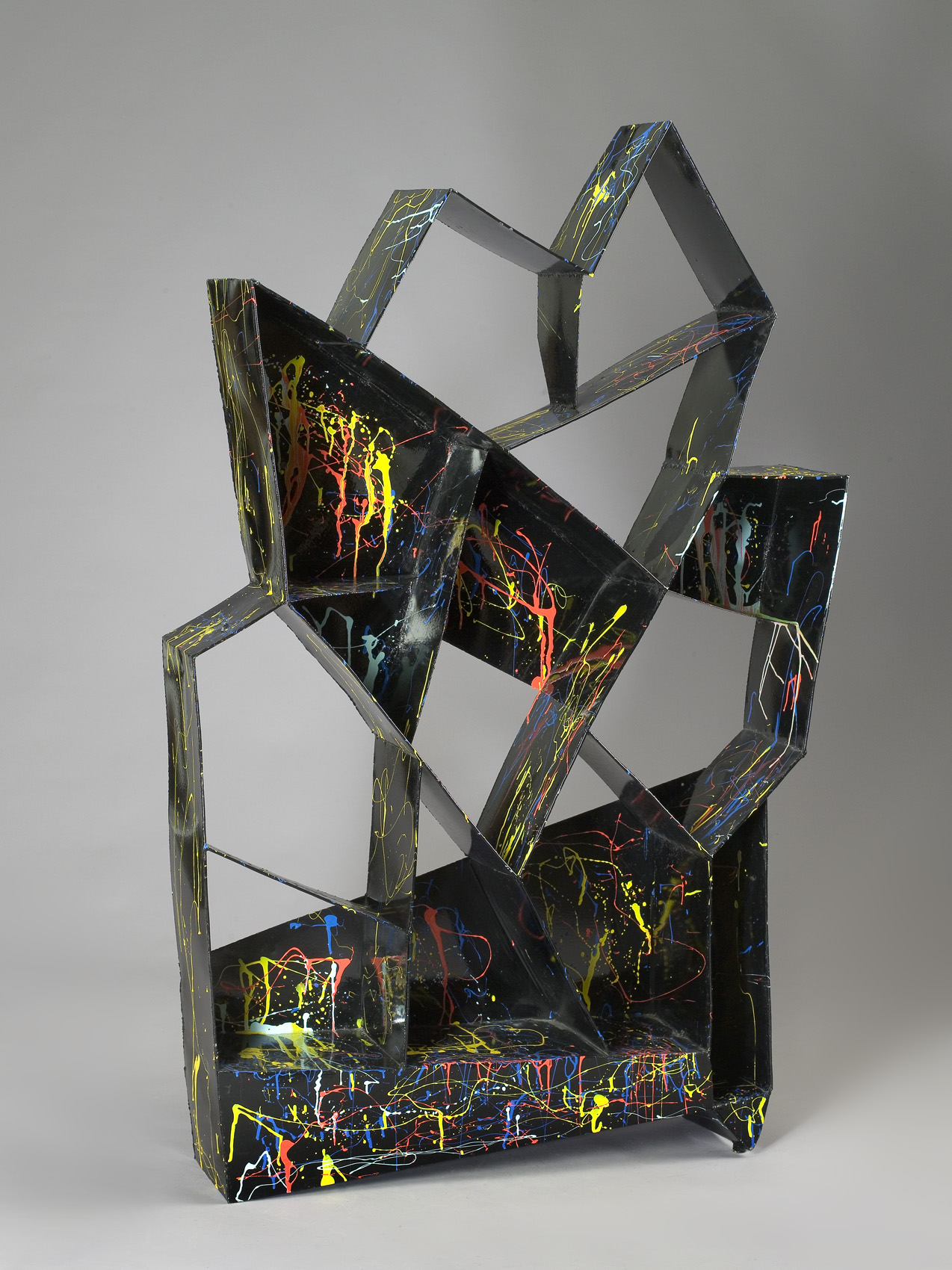
Prague Art Group Atika
In 1987 a group of six designers-architects – Bohuslav Horák, Vít Cimbura, Jiří Pelcl, Jiří Javůrek, Jaroslav Šusta Jr and Vlastimil Vagaday – responded to the bleakness of mass production and the stranglehold of Functionalism by establishing the Prague art group Atika. They created unique one-piece furniture designs as works of art, emphasising individuality and unorthodox forms imbued with stories and emotions. The humorous ironic play with poetic symbolism was seen from abroad as fresh input to postmodernity worldwide, linked with both the genius loci of Prague and the absurdity of the Socialist world.
Bohuslav Horák (born 1954). Labyrinth of Autumn bookshelf, 1987. Steel, painted in acrylic
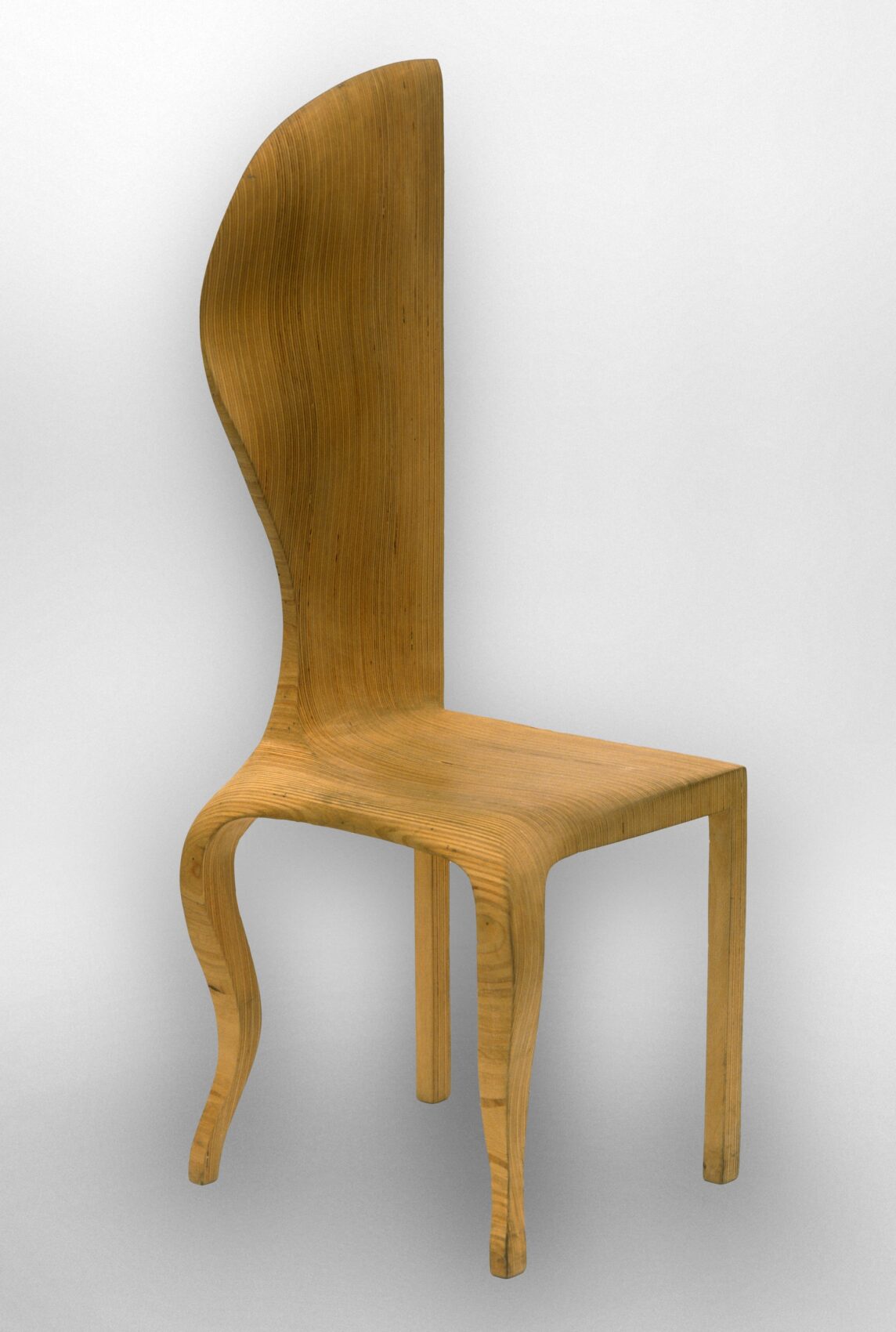
Milan Knížák
The Czechoslovak artist to reach furthest to the limits of alternative design, comparable to global developments, was Milan Knížák. His furniture designs offered imaginative contemporary takes on historical forms from Baroque to Biedermeier and the crystalline shapes of Czech Cubism, to which he dedicated his Cocub series. Knížák’s unique artistic furniture pieces have gained international renown. In 1986 they were even exhibited at the Alchimia gallery in Milan, the global epicentre of postmodernity.
Milan Knížák (nar. 1940). Chair, dubbed “Baroque”, 1985. Beech plywood, lacquer
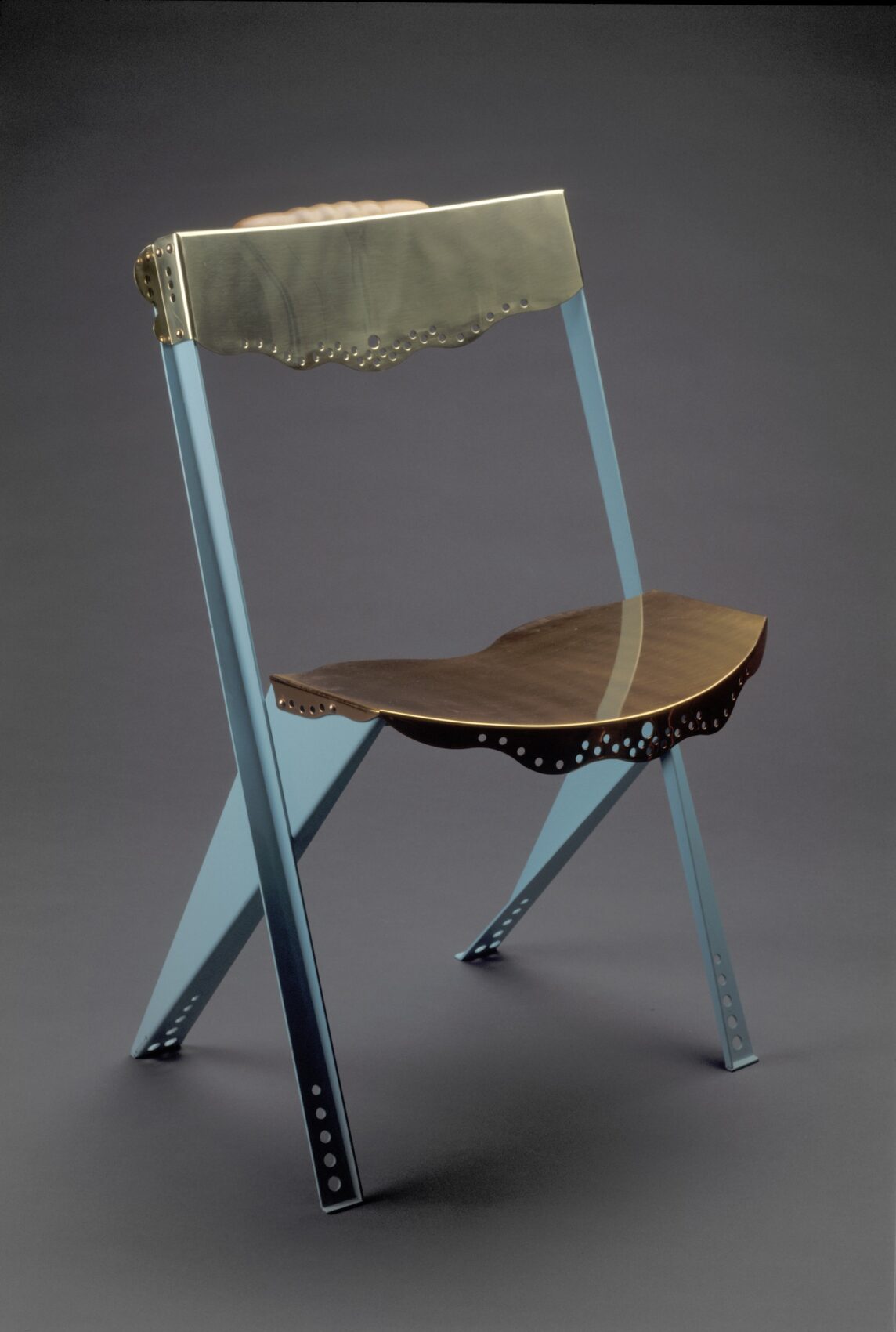
Bořek Šípek
The designer Bořek Šípek, who lived in the Netherlands in the 1980s, became a core designer for the Italian furniture company Driade, cementing his international reputation. Artisan precision, uncommon material combinations, and semantic ambiguity are proof of Šípek’s new postmodern perspective in opposition to the “objectivity of the industrial shape”.
Bořek Šípek (1949–2016). Židle Ota Otánek, 1989, ocel, měď dřevo, dar Vitra Design Musea 1991
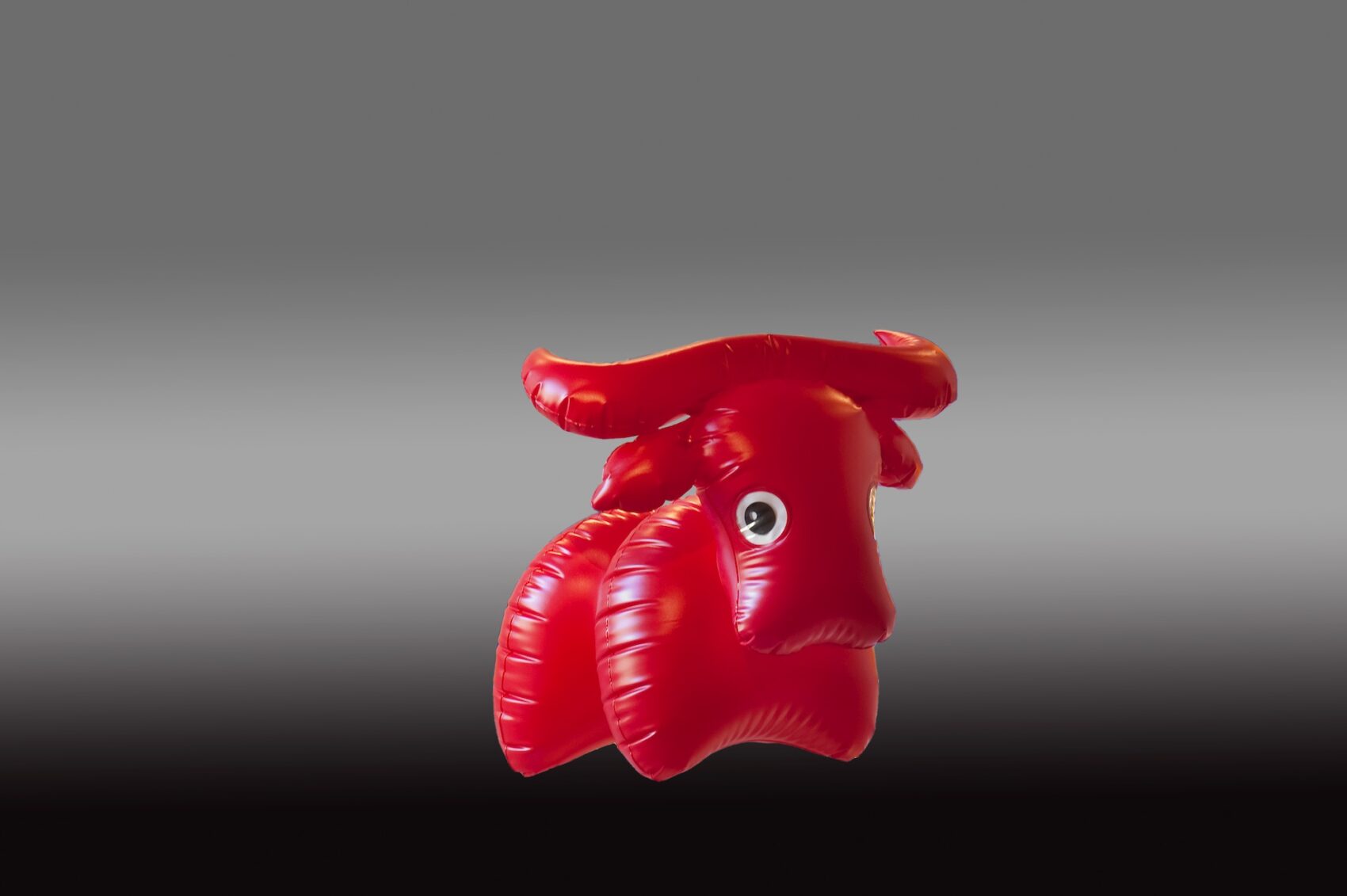
Libuše Niklová
The world-renowned Czech toy designer Libuše Niklová studied plastic sculpting, and she made perfect use of the new material in designs created as an employee of Gumotex Břeclav and later mainly Fatra Napajedla (from 1961). Her most famous designs were a series of concertina-like whistling toys (e.g., Tomcat), which she built using a corrugated plumber’s pipe, and later also a series of inflatable animal seats.
Libuše Niklová (1934–1981). Buffalo, Giraffe and Elephant inflatable toys, 1971. Fatra Napajedla, 1973–1977; new edition 2016. PVC foil
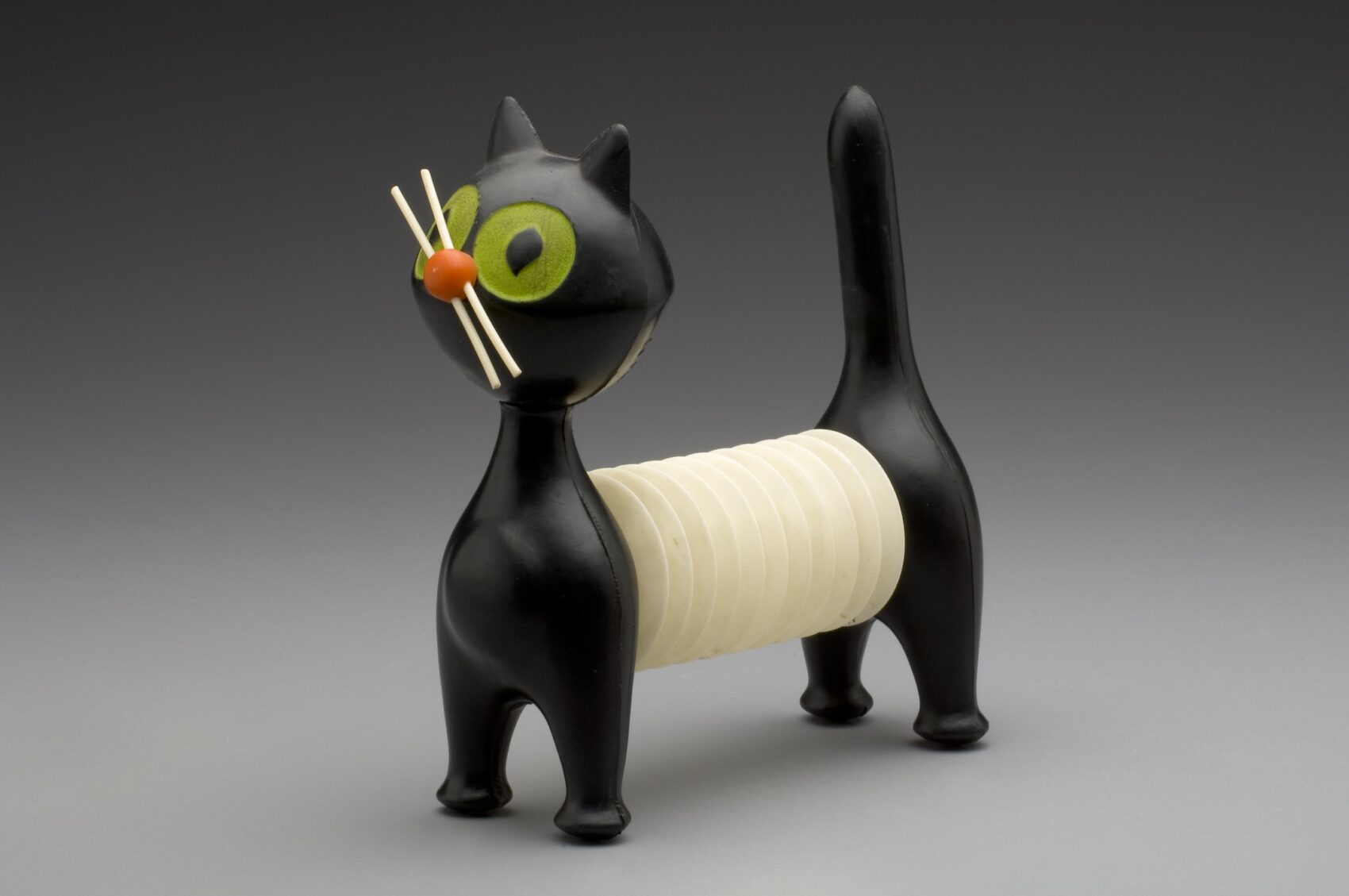
Tomcat
The most famous designs of Libuše Niklová were a series of concertina-like whistling toys (e.g., Tomcat), which she built using a corrugated plumber’s pipe, and later also a series of inflatable animal seats.
Tomcat, Libuše Niklová, 1963, Fatra Napajedla. Plastic
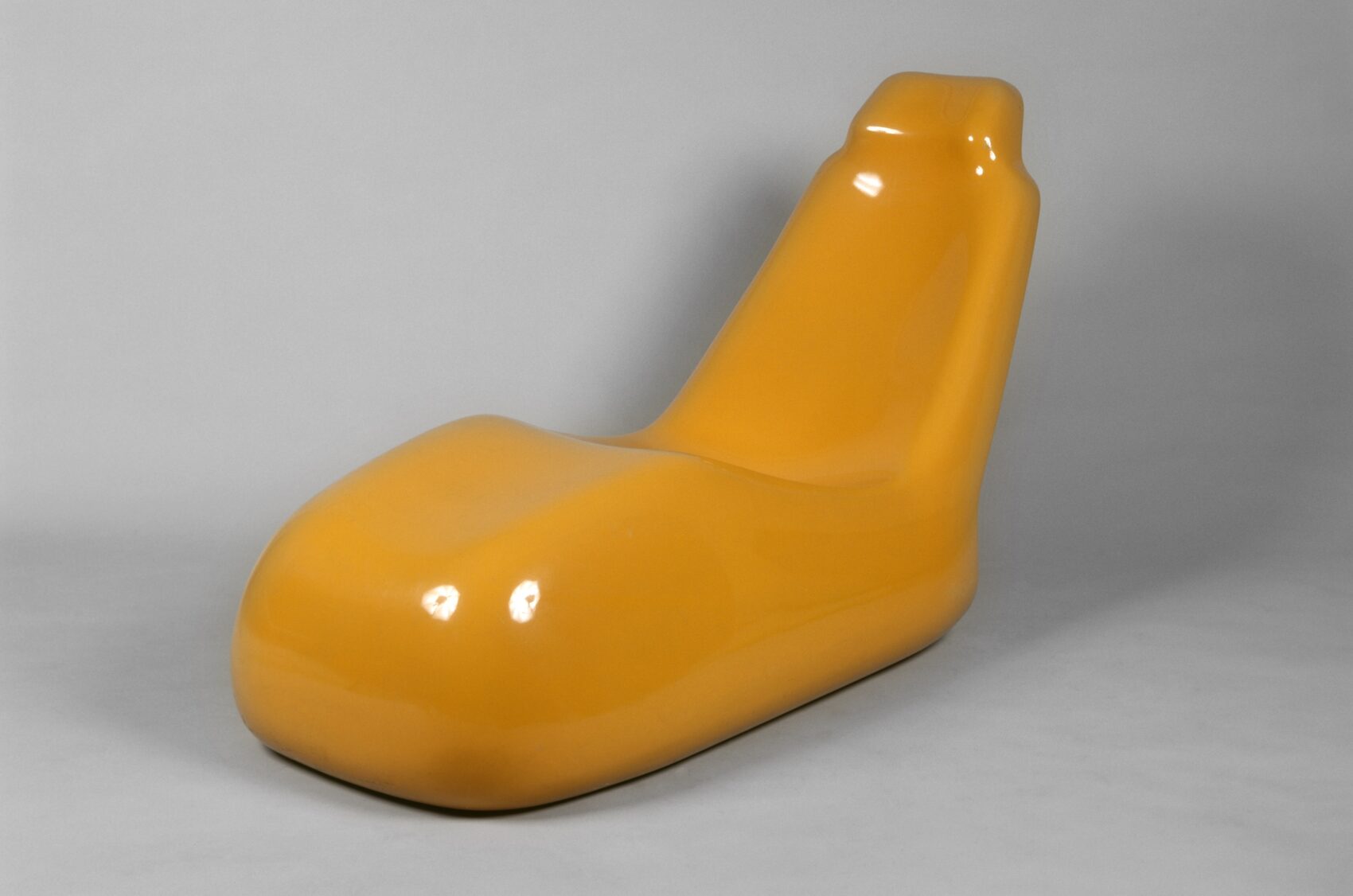
Cosmos
Alberto Rosselli (1921–1976). Moby Dick lounge chair, 1969. Produced by Saporiti Industria Arredamenti, Italy. Fibreglass